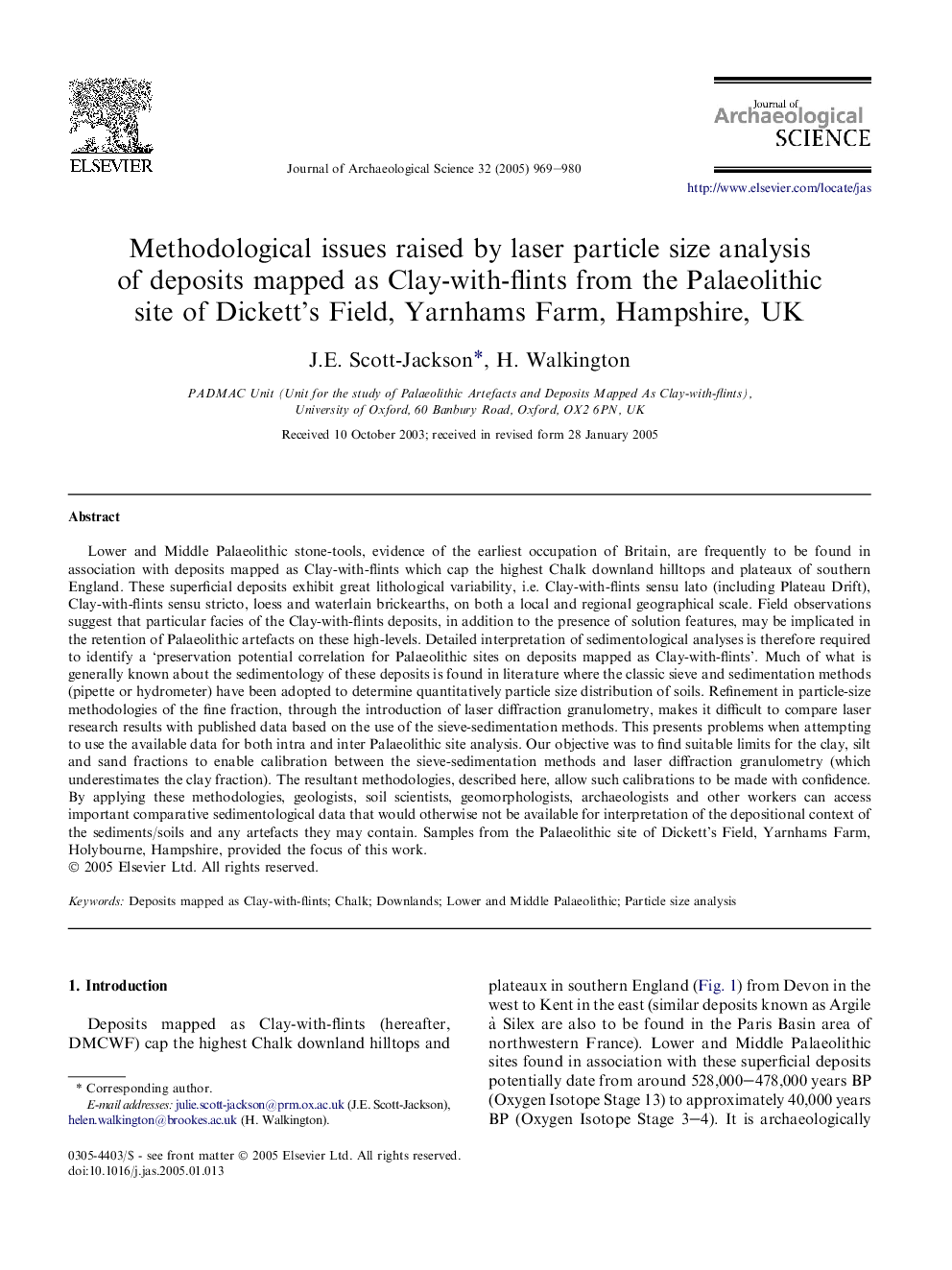| Article ID | Journal | Published Year | Pages | File Type |
|---|---|---|---|---|
| 10499436 | Journal of Archaeological Science | 2005 | 12 Pages |
Abstract
Lower and Middle Palaeolithic stone-tools, evidence of the earliest occupation of Britain, are frequently to be found in association with deposits mapped as Clay-with-flints which cap the highest Chalk downland hilltops and plateaux of southern England. These superficial deposits exhibit great lithological variability, i.e. Clay-with-flints sensu lato (including Plateau Drift), Clay-with-flints sensu stricto, loess and waterlain brickearths, on both a local and regional geographical scale. Field observations suggest that particular facies of the Clay-with-flints deposits, in addition to the presence of solution features, may be implicated in the retention of Palaeolithic artefacts on these high-levels. Detailed interpretation of sedimentological analyses is therefore required to identify a 'preservation potential correlation for Palaeolithic sites on deposits mapped as Clay-with-flints'. Much of what is generally known about the sedimentology of these deposits is found in literature where the classic sieve and sedimentation methods (pipette or hydrometer) have been adopted to determine quantitatively particle size distribution of soils. Refinement in particle-size methodologies of the fine fraction, through the introduction of laser diffraction granulometry, makes it difficult to compare laser research results with published data based on the use of the sieve-sedimentation methods. This presents problems when attempting to use the available data for both intra and inter Palaeolithic site analysis. Our objective was to find suitable limits for the clay, silt and sand fractions to enable calibration between the sieve-sedimentation methods and laser diffraction granulometry (which underestimates the clay fraction). The resultant methodologies, described here, allow such calibrations to be made with confidence. By applying these methodologies, geologists, soil scientists, geomorphologists, archaeologists and other workers can access important comparative sedimentological data that would otherwise not be available for interpretation of the depositional context of the sediments/soils and any artefacts they may contain. Samples from the Palaeolithic site of Dickett's Field, Yarnhams Farm, Holybourne, Hampshire, provided the focus of this work.
Related Topics
Physical Sciences and Engineering
Materials Science
Materials Science (General)
Authors
J.E. Scott-Jackson, H. Walkington,
